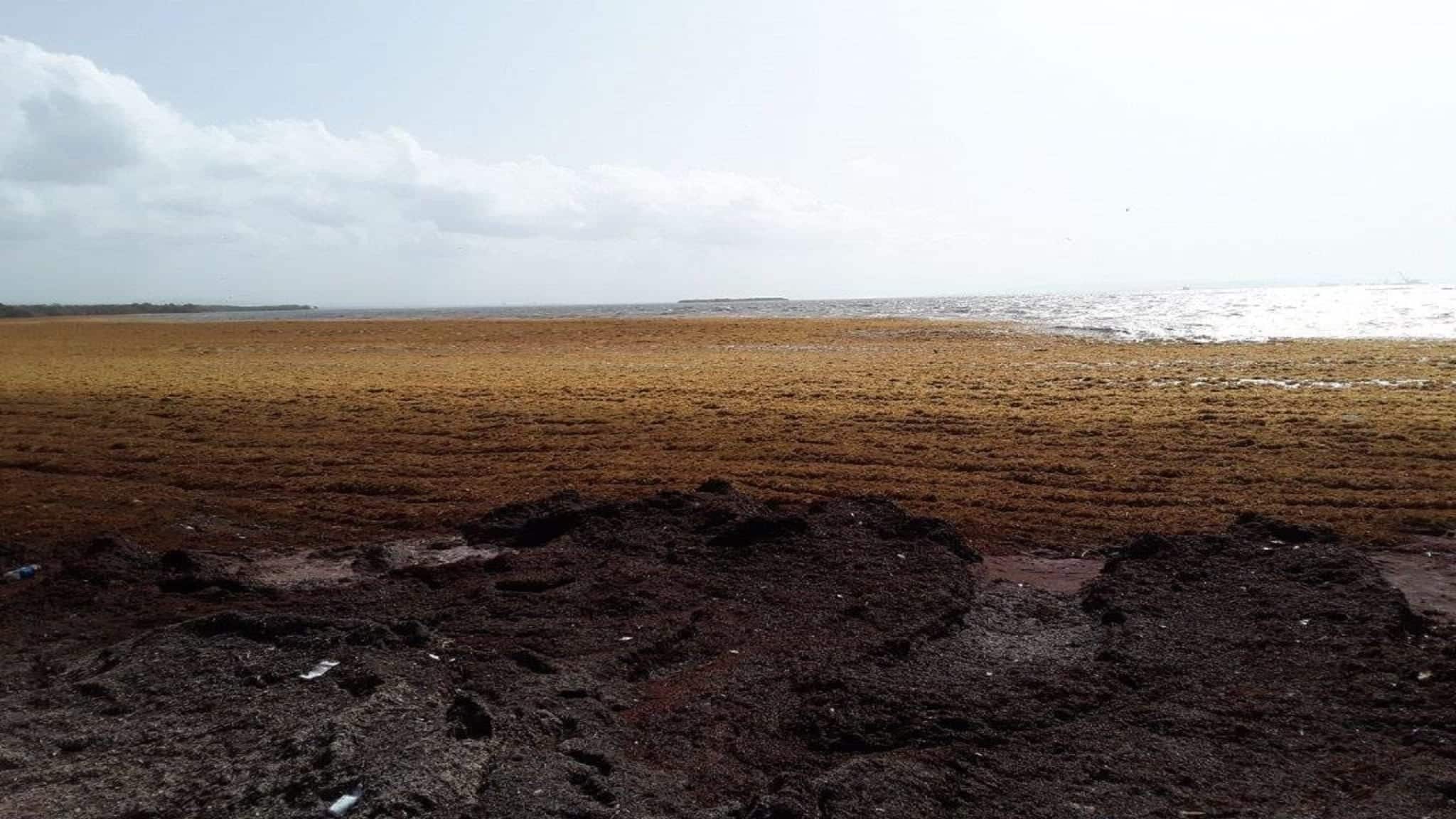Since 2012/13, we have been battling seaweed named Sargassum in the Caribbean. While Sargassum is a normal part of ocean life, and an important habitat, the warmer waters produced by climate change allow it to proliferate at an explosive rate. Appearing in such vast quantities, Sargassum quickly turns dangerous.
Aggregations of Sargassum can block the sunlight from coral, cutting the algae off from its food supply and killing the coral polyps. When the seaweed eventually dies on the beaches, it unleashes massive amounts of nitrogen and phosphorus, contaminating fresh water supplies. All the carbon dioxide the Sargassum had previously sucked out of the atmosphere also gets released back into the air.
Prior to 2011 there had been no reports of golden tides on the shores of northwest Africa. The exact reason for the Sargassum inundations of recent years are not fully known, although climate change and coastal sea eutrophication are implicated. And it is very probable that the golden tides of 2011–2019 will continue to happen every year.
Deposits of Sargassum occur naturally and regularly on beaches, albeit in smaller quantities than the major golden tides of 2011–2015. They play a role in stabilizing beaches and providing nutrients for beach and dune plants.
Leaving Sargassum where it is may be a viable approach for small deposits, avoiding the cost and potential negative impacts of beach cleaning, such as sand removal and destruction of habitat. However, large deposits may not be acceptable to beach users, and may have negative environmental effects, smothering organisms such as turtle hatchlings
Tourists are reported to be avoiding resorts affected by golden tides, and Sir Hilary Beckles, the Vice Chancellor of the University of the West Indies, has described the inundation of Caribbean and Mexican Gulf beaches as “an international crisis” and “the greatest single threat” to the Caribbean.
What is Sargassum?
What is Sargassum?

Satellite image of Seaweed in the Eastern Caribbean, June 22, 2020
Satellite image of Seaweed close to Jamaica, June 22, 2020
Images are showing the FA_density:
Floating algae density, in terms of percentage of area cover. A value of 0.1 on the color bar (visible when loaded in Google Earth) indicates 0.1% surface area coverage in that location. The density is calculated as a mean of the 7 past days (including the current day), and based on the corresponding alternative floating algae index (AFAI) images using the method described in Wang and Hu (2016). Wang, M., and C. Hu (2016). Mapping and quantifying Sargassum distribution and coverage in the Central West Atlantic using MODIS observations. Remote Sens. Environ., 183:356-367. http://dx.doi.org/10.1016/j.rse.2016.04.019
Source: https://optics.marine.usf.edu/cgi-bin/optics_data?roi=JAMAICA¤t=1
Tourism in the Caribbean in 2019
Tourism was worth $40.6 billion in on-shore spending in the Caribbean in 2019, and contributed over 80% of the regional GDP. Stay-over arrivals grew by 4.4 per cent to reach 31.5 million, outpacing the international rate of growth of 3.8 per cent reported by the World Tourism Organization, and the highest growth rate in the Americas. At the same time, cruise visits increased by 3.4 per cent to 30.2 million, representing the seventh consecutive year of growth.
US$3.8 billion for Jamaica
However, the removal of Sargassum from beaches or the prevention of it reaching the beaches could be very costly. It has been estimated that it would take at least $120 million to clean up the Sargassum inundations across the Caribbean based on the $5 million spent on the clean-up of beaches in Mexico. The prevention of seaweed reaching the beaches could also be costly, with 300-m floating booms estimated to cost $80,000 to protect some of the beaches of St. Vincent and the Grenadines.


